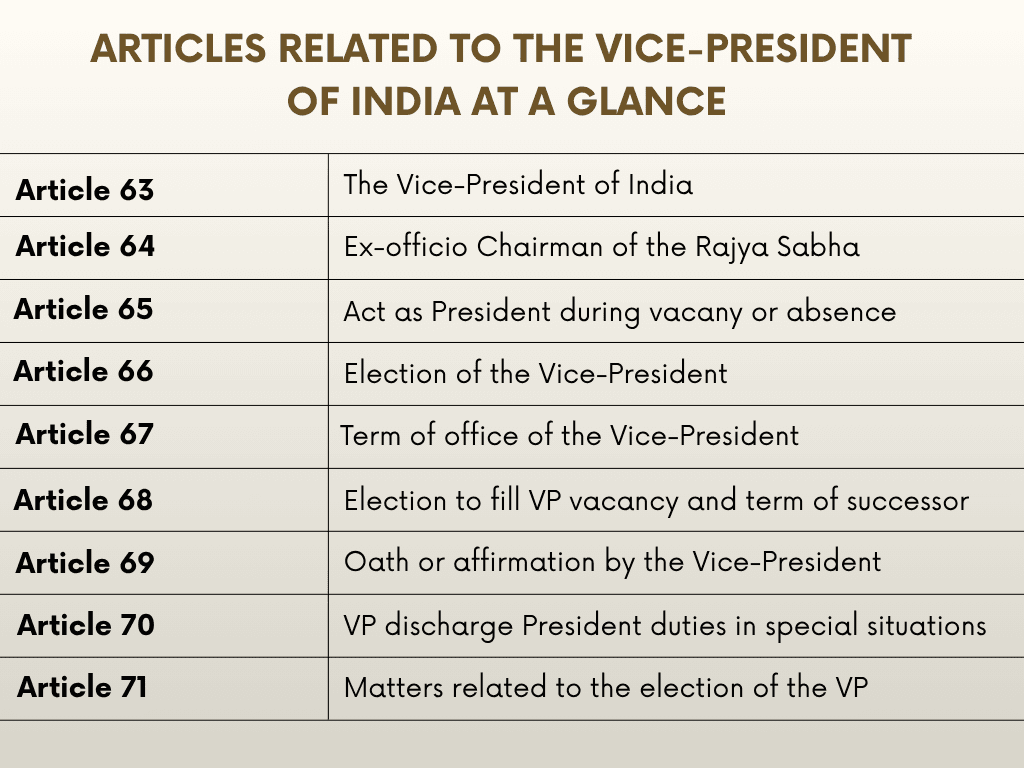Primary Roles of the Vice President of India
The Vice President plays a dual role — one under the Constitution and the other within the Parliament. These responsibilities make the office significant for both executive stability and legislative functioning.
1. Ex-Officio Chairman of the Rajya Sabha (Article 64)
The Vice President is the presiding officer of the Upper House of Parliament. Here’s what this role includes:
- Presiding Over Sessions: The Chairman conducts daily sessions, maintains order, and ensures discipline and decorum in the House.
- Disciplinary Powers: Under Rule 256 of the Rajya Sabha Rules of Procedure, the Chairman can suspend a member for the remaining session for disorderly conduct or disrespect to the Chair.
- Interpreting Rules & Procedures: The Chairman has the authority to interpret procedural rules and make rulings on points of order raised during discussions.
- Maintaining Neutrality and Order: As a non-member, the Chairman is expected to remain impartial and allow equal opportunity for all members to speak. He ensures fair debates and adherence to parliamentary practices.
- Casting Vote in Case of Tie (Article 100): The Chairman does not vote normally, but can exercise a casting vote in case of a tie, ensuring decisions are not deadlocked.
- Referral to Committees: The Chairman also has an administrative responsibility of referring bills, motions, and resolutions to relevant parliamentary committees for detailed discussion and examination.
2. Acts as President in Absence (Article 65)
Performs the functions of the President of India during:
- Vacancy in the presidential office
- Absence, resignation, removal, or death of the President
- Can discharge these duties for a maximum of six months until a new President is elected.
3. Other Institutional Roles of Vice President
- Chancellor of the University of Delhi & Panjab University, Chandigarh
- Visitor of Makhanlal Chaturvedi National University of Journalism and Communication
- President of the Indian Institute of Public Administration (IIPA)
Also read: Centre-State Relations for UPSC: Federalism, Conflicts & Cooperation
In a rare instance, Vice President Jagdeep Dhankhar recently resigned mid-term, citing health reasons. Let’s understand the resignation procedure from a constitutional point of view.


![Aravali Range in News [UPSC 2025]](/_next/image?url=https%3A%2F%2Fblog-media.superkalam.com%2Faravali_hills_f4a51f37bf.jpeg&w=3840&q=75)
![MGNREGA Vs VB-G RAM G [UPSC 2025]](/_next/image?url=https%3A%2F%2Fblog-media.superkalam.com%2FMGNREGA_vs_GRAMG_ea46241736.jpeg&w=3840&q=75)